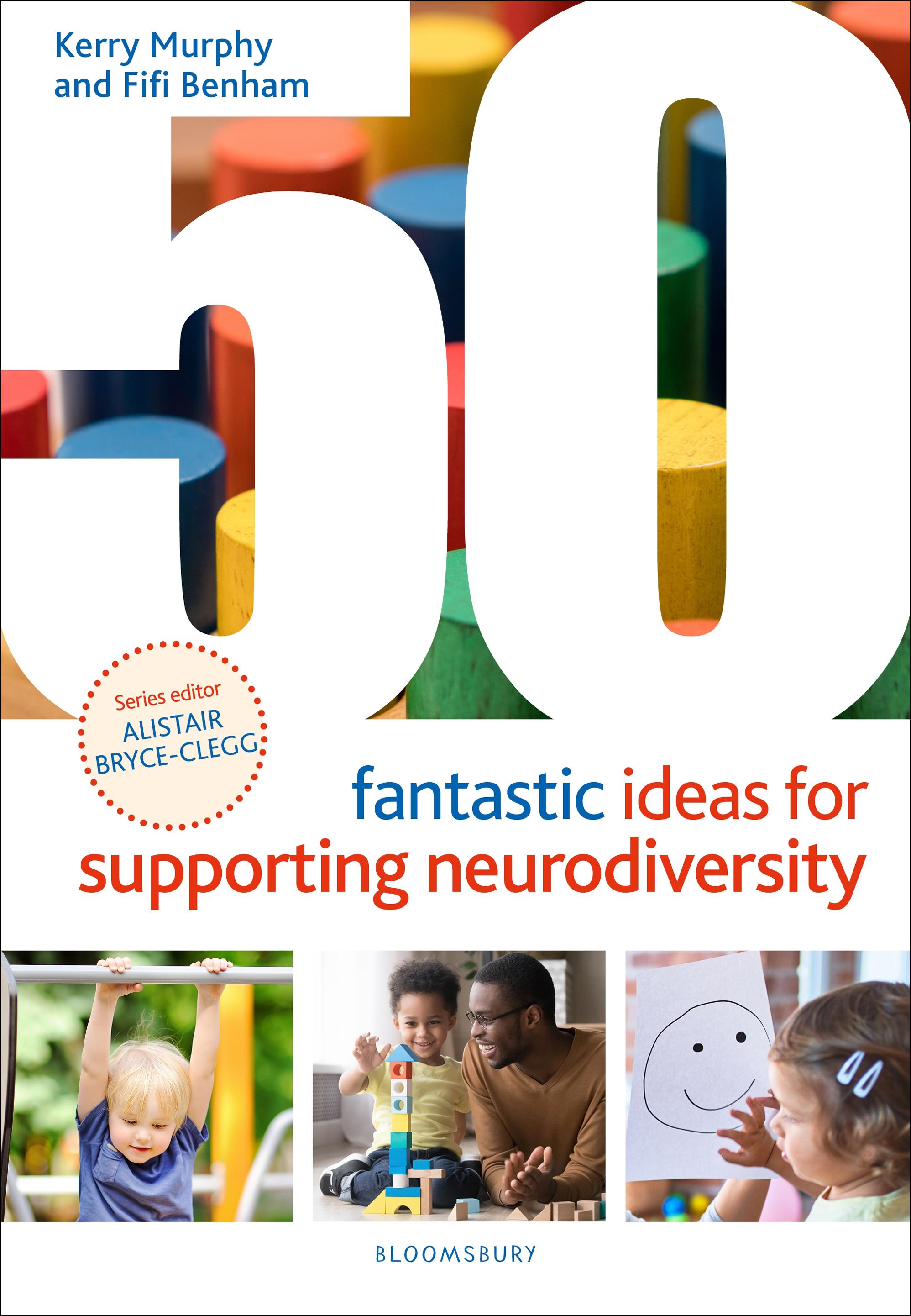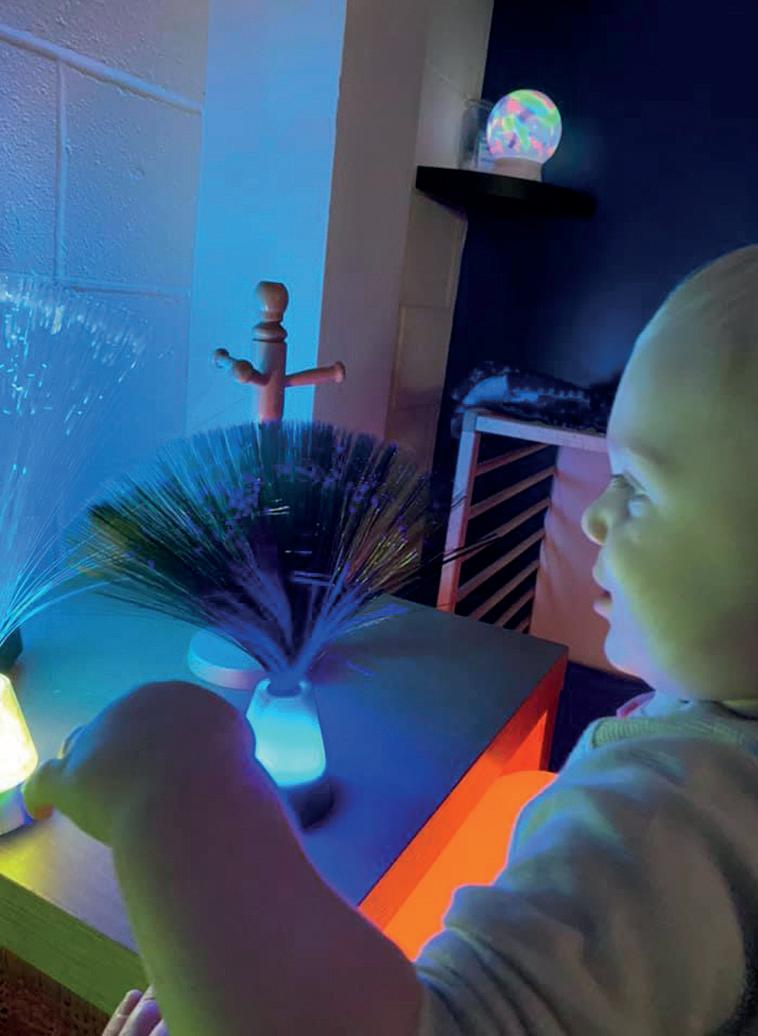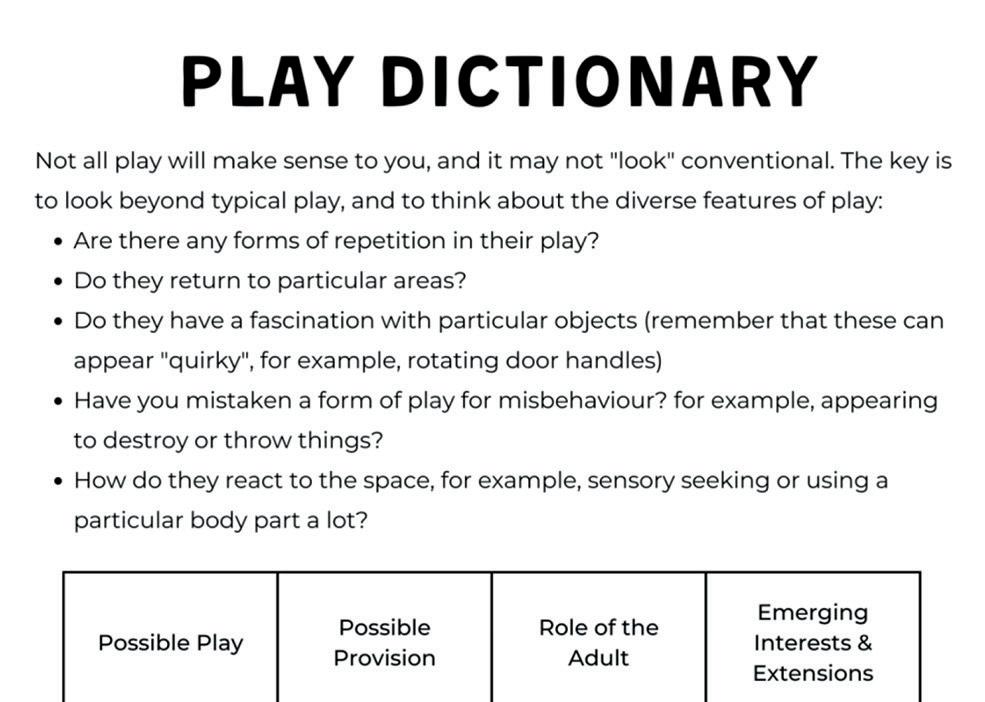

BLOOMSBURY EDUCATION
Bloomsbury Publishing Plc
50 Bedford Square, London, WC1B 3DP, UK
29 Earlsfort Terrace, Dublin 2, Ireland
BLOOMSBURY, BLOOMSBURY EDUCATION and the Diana logo are trademarks of Bloomsbury Publishing Plc
First published in Great Britain, 2023 by Bloomsbury Publishing Plc
This edition published in Great Britain, 2023 by Bloomsbury Publishing Plc
Text copyright © Kerry Murphy and Fifi Benham, 2023
Photographs © Roz Darlington and Hayley Murphy at Keep Fit Kids Day Nursery (Altrincham), 2023 / © Daniela Tonazzolli at the_cattanis, 2023 / © Laura Henry Allain, 2023 / © Melissa Blignaut, 2023 / © Victoria Neish, 2023 © Sarah Doyle, 2023 / © Tracey Murphy, 2023 / © Ella Kwan, 2023 / © Reia Kwan, 2023 / © Shutterstock, 2023
Kerry Murphy and Fifi Benham have asserted their rights under the Copyright, Designs and Patents Act, 1988, to be identified as Authors of this work
Bloomsbury Publishing Plc does not have any control over, or responsibility for, any third-party websites referred to or in this book. All internet addresses given in this book were correct at the time of going to press. The author and publisher regret any inconvenience caused if addresses have changed or sites have ceased to exist, but can accept no responsibility for any such changes
All rights reserved. No part of this publication may be reproduced or transmitted in any form or by any means, electronic or mechanical, including photocopying, recording, or any information storage or retrieval system, without prior permission in writing from the publishers
A catalogue record for this book is available from the British Library
ISBN: PB: 978-1-8019-9218-3; ePDF: 978-1-8019-9216-9
Design concept by Lynda Murray Design by Jeni Child
To find out more about our authors and books visit www.bloomsbury.com and sign up for our newsletters
Acknowledgements
With special thanks to Sarah Doyle, Tracey Murphy, Ella Kwan and Reia Kwan
Introduction 4 Strengths-based practice Celebratory one-page profile ....................... 6 Communication identity 7 My way to a good day .................................. 8 Play dictionary .............................................. 9 Whole-body affirmations 10 Neuroprops ................................................ 11 Child-led play SpIN boxes 12 Parallel play ................................................ 13 Get outdoors 14 Play mapping ............................................. 16 Alternative communication Neuroinclusive now and next 17 Ready, steady, blow ................................... 18 Visual pocket chart 20 QR codes 22 Declarative language ................................. 23 Mirror and model 24 Babble box 26 OREO ......................................................... 27 Embracing echolalia 28 Object of reference .................................... 30 Emotional regulation Wellbeing choice board 31 Mood zones ............................................... 32 Reaction walls 34 Transition bottles 35 Interobreathing .......................................... 36 Wellbeing dice 38 Sensory regulation Sensory den 39 Sitting still soothers 40 SOS bag 41 Homemade lava lamp 42 Touch book ................................................ 43 Back-to-back breathing ............................ 44 Sensory shows .......................................... 45 Homemade sound baths 46 Energy breaks 47 Visual soothers 48 Moving with materials 49 Actions over answers ................................ 50 Heavy work Heavy work basket 51 Heavy work routines 52 Balloon volleyball 53 Learning new skills Pom-pom sweep ....................................... 54 Chunking .................................................... 55 Backwards chaining 56 Chair warm ups 58 Theraputty play 59 Digital technology 60 Literacy Neuroinclusive stories ............................... 61 Sensory stories 62 Symbol stories 63 References and Glossary References ................................................. 64 Glossary ..................................................... 64 Contents
When we were asked to write 50 Fantastic Ideas for Supporting Neurodiversity, we felt mindful that many neurodivergent and disabled children experience interventions that can predominately be adult-directed or prescriptive. This can lead to practice that focuses on training the child out of their neurodivergence or disability. And so, we wanted to offer ideas, but we also wanted to ensure that this book took a neurodiversityinformed and affirming approach. We wanted to produce a book that embraced the concept of fantastic ideas but one which also honours the child’s unique way of being.
Our use of neurodivergent is an umbrella term encompassing people who process, learn, and/or behave differently from what would be considered typical.
Autism, Attention Deficit Hyperactivity Disorder (ADHD) and dyslexia are specific diagnoses generally considered as neurodivergence; this is not an exhaustive list, as many other disabilities also cause lifelong neurological and physical differences. In Early Years, most children will not have a diagnosis despite observable differences from neurotypical peers. Neurodivergent is, therefore, a useful term to acknowledge children whose needs may not be met adequately by standard practice. We refrain from using the term ‘special needs’ as we all have a range of access needs, and disabled people’s access needs being less likely to be met can be exacerbated by implying their needs are ‘special’ or ‘additional’. The amount of support different neurodivergent children will require in order to have their access needs met will vary, so in this book we address both high- and low-support needs.
It is essential that neurodivergent children are recognised as having unique needs, preferences and strengths with as much variation therein as neurotypical children.
These ideas are intended as a guide for practitioners looking to improve their neurodivergent inclusive practice. Not all suggestions will apply or appeal to every neurodivergent child, so building individual relationships and being able to adapt practice in the moment are key.
As Early Years practice covers a range of settings and roles, the practicality of different activities will vary. Ratios, resources and the space available all impact how to achieve best practice, so activities can be adapted based on these factors. There are always multiple ways to meet the same need and to create the same play opportunities.
You will also notice that we have offered ideas that relate to the process of capturing information about children. We recognise that each local area will be subject to different policies and procedures, and you may need to adhere to these to access support and funding. However, these ideas are there to re-frame some of our thinking and should assist in building positive partnerships with children, families and specialists.
Neurodivergent children may respond to or engage with activities in a way that is unexpected. There is no right or wrong way to play. Children must be given the freedom and support to fully explore their own ideas regardless of whether those ideas follow the practitioner’s plan.
We hope that amongst these pages, you find some inspiration and hope in the fact that our neurodivergent and disabled children are competent, capable, unique and worthy of identity-affirming practice.
Both Fifi (they/them) and Kerry (she/her) have lived experience of neurodivergence, and so this book is in part informed by our own ways of being.
Introduction
4 50 fantastic ideas for supporting neurodiversity
Foreword
Fifi Benham and Kerry Murphy’s book is a valuable contribution that benefits children who are neurodivergent or have disabilities. The book offers practical ideas that provide guidance and permission to break away from the widely held ‘deficit lens’ that has been harmful to so many children. By challenging the prevailing notion of what is considered ‘normal’ and encouraging a more inclusive perspective, the authors are promoting a more equitable and compassionate approach to supporting children’s development. The impact of their work has the potential to change the educational experiences of countless children and families, and fully embraces neurodiversity-affirming approaches in early childhood.
David Cahn (ADHD) Free to Learn Childminding
How to use this book
The pages are all organised in the same way. Before you start any activity, read through everything on the page so that you are familiar with the whole activity and what you might need to plan in advance.
What you need lists the resources needed for each activity. Some activities do not require resources.
Definition describes new concepts and ideas that you may not have encountered. What to do provides both step-by-step instructions and ways in which the overall idea could be implemented.
Neurodiversity-affirming element gives clear guidance on why the idea is neurodiversity affirming. This is in part because many existing strategies and techniques are not underpinned by a neurodiversity approach.
What’s in it for the children? outlines the rationale for the idea, and highlights why it is important.
Taking it forward provides extensions to the activities, including how the idea might be expanded, how to work with parents and carers or specialists, or how to build into goal planning for the child’s outcomes.
Top tips give a brief word of advice or helpful tip that could make all the difference to how the children experience the activity.
Health & Safety is only included if there are particular issues to be noted and addressed, above and beyond usual health and safety measures
Forms and templates that accompany the activities are available to download from the Bloomsbury Education website: bloomsbury.pub/50-fantastic-ideassupporting-neurodiversity.

5 50 fantastic ideas for supporting neurodiversity
Celebratory one-page profile
Celebrate strengths, interests, differences and needs
What you need:
• Access to PowerPoint or a scrapbook
What to do:
1. A one-page profile can be designed in any way you prefer. You might consider using PowerPoint, or you could complete it alongside the child or family on a scrapbook page.
2. Provide ‘Basic information’ , including name(s), gender identity, pronouns and neurotype/need. You might also include a picture.
3. Create a heading and write about main ‘Strengths and interests’
4. Include a heading called ‘Traits’ . If the child has a diagnosis, this is where you can emphasise their unique traits rather than focusing purely on delays and deficits. For example, an autistic child may have a preference for solitary or parallel play.

5. Add the heading ‘Support needs’ , where you can list the key things the child needs. For example, the child may require Makaton to communicate.
Neurodiversity-affirming element
The profile captures all key ‘need to know’ information in one place, making it an easy way to quickly gather and share information to ensure consistency of care.
What’s in it for the children?
During your time with a child, you will develop a wealth of knowledge about their developmental differences and needs. A one-page profile captures all the important information on a single piece of paper through key headings. It is useful for children with a diagnosis whose neurotype or disability might be subject to stereotypes and misconceptions.

Taking it forward
● Create your own one-page profile for children and families before you meet.
● Over time, support the child to take responsibility for their own one-page profile so that they can begin to take ownership of describing and advocating for themselves.
6
50 fantastic ideas for supporting neurodiversity
Communication identity
Capturing communication beyond speech
What you need:
• Access to word processing software
What’s in it for the children?
All children communicate in various ways, such as body language, signs, visuals or vocalisations. We must honour and seek to understand all forms of communication. It is important not to assume the same behaviours, body language or vocalisations mean the same thing to everyone. There are some neurodivergent children whose external communication directly opposes what they want to express, so providing as many tools as possible for deliberate, meaningful communication is essential.
Taking it forward
● Use this tool to inform decisions about provision. For example, if a child’s communication identity is non-speaking, ensure there are environmental supports provided.

What to do:
1. The information can be captured in any way you prefer, for example, using a template or PowerPoint.
2. Choose headings that are relevant to the child. Examples might include:
- Name and personal meaning
- Languages spoken
- Main forms of communication and personal meanings – for example, pointing
- Things that might get lost in translation
- Types of interaction that provide comfort
3. Complete this activity together with family, and use the information to inform your practice.

Neurodiversity-affirming element
This tool supports neurodiversity-affirming practice and helps us to honour all communication forms beyond speaking. It helps us to connect with the child and family during transitions and embraces the different funds of knowledge children bring to the setting, as well as ensuring that we meet the different communication needs of all children.
7
50 fantastic ideas for supporting neurodiversity
Play dictionary

Honouring neurodivergent ways of playing
What you need:
• A notepad
• A pen
What’s in it for the children?
It has been suggested that play does not come naturally to neurodivergent and disabled children. This is not necessarily true, and it is becoming more apparent that the way children play can be diverse and may require us to take more time to ‘tune in and zoom in’ to their unique ways of playing. This activity empowers you to build up knowledge about diverse types of play over time so that children are better understood and supported. When observing a child at play, if there are aspects that you do not yet understand, it might be helpful to use your play dictionary to look for patterns in their play.
Taking it forward
● Use your knowledge of individual children to make the wider environment more inclusive of neurodivergent and disabled play styles.
● Embrace all forms of play to facilitate strength-based discussions with families that show you value and understand their child’s differences.
Top tip
Often, children are taken into adult-led interventions, which can interfere with and deprive them of their play. Instead, let the child take the lead. We can see their perspectives in play more easily if we follow their interests.
What to do:
1. Observe the child and note down the different aspects of their diverse play, especially if they do not yet make sense to you.
2. You might note down things such as:
● Areas, toys and resources of interest, or things they return to.
● Repetitive behaviours or actions, including selfstimulatory behaviours.
● The context – for example, solitary, parallel or cooperative play.
● Vocalisations, language or forms of communication used.
● Neurodivergent or disabled styles of play or traits.
3. Over time, you should build a picture of the play interest and develop a deeper understanding of what is happening. This will enable you to lean into the diverse playing style and plan for it as it unfolds.
Neurodiversity-affirming element
Historically, there has been a tendency to believe that neurodivergent or disabled play styles are symptoms rather than traits. There were attempts to eliminate rather than understand play that looked different. Using the dictionary empowers you to look beyond typical play. Child-led play has a wealth of benefits for neurodivergent and disabled children, and by planning based on their unique interests, we honour and support divergent pathways.
9 50 fantastic ideas for supporting neurodiversity












